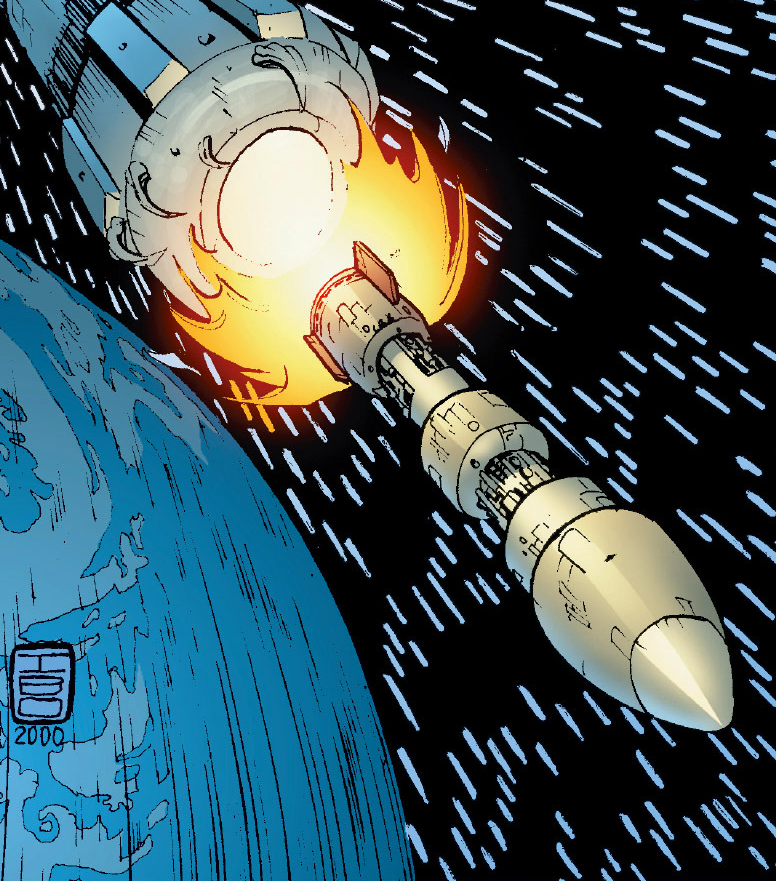Quis custodiet ipsos custodes?

OUT OF CHARACTER INFORMATION
Intent: To create ammunition for use by a new form of hyperspace artillery cannon.
Image Source: https://vignette.wikia.nocookie.net/starwars/images/e/ea/ParticleDisintegratorWarhead-HBDE.jpg/
Canon Link: http://starwars.wikia.com/wiki/Nuclear_bomb
Primary Source: N/A
PRODUCTION INFORMATION
Manufacturer: Defiance Consolidated Multipurpose Manufacturing
Affiliation: Sith Empire(Research and Development)
Model: Godslayer Hyperspace Artillery Shell
Modularity: No
Production: Semi-Unique
Material: Deuterium and tritium(fusion fuel), durasteel(casing), lead(tamper), antimatter(catalyst for nuclear reactio,
TECHNICAL SPECIFICATIONS
Classification: Artillery Shell
Size: Extreme
Weight: Extreme
Ammunition Type: Missile
Ammunition Capacity: It's a missile. One use.
Reload Speed: None(single use)
Effective Range: Extreme
Rate of Fire: Very Low
Stopping Power: Extreme
Recoil: High
SPECIAL FEATURES
it's a giant thermonuclear weapon.
Strengths: The Godslayer is a gargantuan thermonuclear weapon designed to crack open the most durable of starships and space stations. Its damage potential is almost unparalleled.
Weaknesses: The projectile is slow, and requires a significant period of time to jump in and impact a target.
DESCRIPTION
The Godslayer hyperspace artillery shell was developed by DCMM for the Sith Empire after it was publicly revealed that one of their enemies, the Silver Jedi Order, possessed a dreadnought-class warship. With conventional warfare effectively impossible to implement against a Star Dreadnought and the Sith Empire loathe to risk one of its own dreadnoughts against the vessel, a new weapon system was needed in order to cause harm to this class of warship. That weapon system was the Godslayer.
The Godslayer is an antimatter-catalyzed, self-propelled, shielded 100 megaton nuclear weapon, intended for use in a hyperspace artillery system currently under development. It is a simple durasteel casing fitted with half-scale ion thrusters and a bomber-grade shield generation system. The internal workings of the weapon consist of a small-scale antimatter charge at the tip of the weapon that is magnetically sealed. Deuterium and tritium are contained within a lead tamper in a second stage and multiple third stages further near the rear of the weapon.
The statistics on the resulting detonation of this weapon on contact with the hull of a Star Dreadnought are as follows(thanks to NUKEMAP):
Crater inside radius: 0.9km (2.52km²)
Crater depth: 430m
Air blast radius (3,000 psi): 1.54km (7.43km²)
Missile silos can be blast hardened to survive many thousand psi of pressure, but not much else can.
Crater lip radius: 1.79km (10.08km²)
Air blast radius (200 psi): 3.73km (43.82km²)
200 psi is approximately the pressure felt inside of a steam boiler on a locomotive. Extreme damage to all civilian structures, some damage to even "hardened" structures.
Radiation radius (5000 rem): 6.54km (134.25km²)
5000 rem radiation dose. 100% fatal exposure.
Radiation radius (1000 rem): 6.86km (147.97km²)
1000 rem radiation dose; with immediate medical treatment, 95% mortality can be expected. Dying takes between several hours and several weeks.
Radiation radius (600 rem): 6.96km (151.98km²)
600 rem radiation dose; with immediate medical treatment, 80% mortality can be expected. Dying takes between several hours and several weeks.
Radiation radius (500 rem): 6.99km (153.39km²)
500 rem radiation dose; without medical treatment, there can be expected between 50% and 90% mortality from acute effects alone. Dying takes between several hours and several weeks.
Fireball radius: 7.92km (197.28km²)
Maximum size of the nuclear fireball.
Thermal radiation radius (35 cal/cm²): 50.74km (8,089.41km²)
Thermal radiation radius (3rd degree burns): 64.23km (12,960.23km²)
Third degree burns extend throughout the layers of skin, and are often painless because they destroy the pain nerves. They can cause severe scarring or disablement, and can require amputation. 100% probability for 3rd degree burns at this yield is 13.9 cal/cm².
Thermal radiation radius (no harm): 138.43km (60,205.83km²)
The distance at which anybody beyond would definitely suffer no damage from thermal radiation (heat). 100% probability of no significant thermal damage at this yield is 2.4 cal/cm².
A single Godslayer has the potential to inflict critical damage to a dreadnought-scale warship. The fireball is large enough to sear the much of the ship's exterior hull and penetrate deeply across multiple decks. The intense thermal radiation in concert with the levels of gamma rays released by the detonation result in both incredulous burns and exposure to levels of radiation deemed lethal. The physical structure of the ship will likely be warped or otherwise seriously damaged by the explosion. Being a weapon of such destructive power, and designed for a very specific purpose, the current Godslayer ammunition is stored at a secure depot within the void of Sith space. Upon completion of the artillery pieces intended to use it, small numbers will be distributed to each artillery piece.








